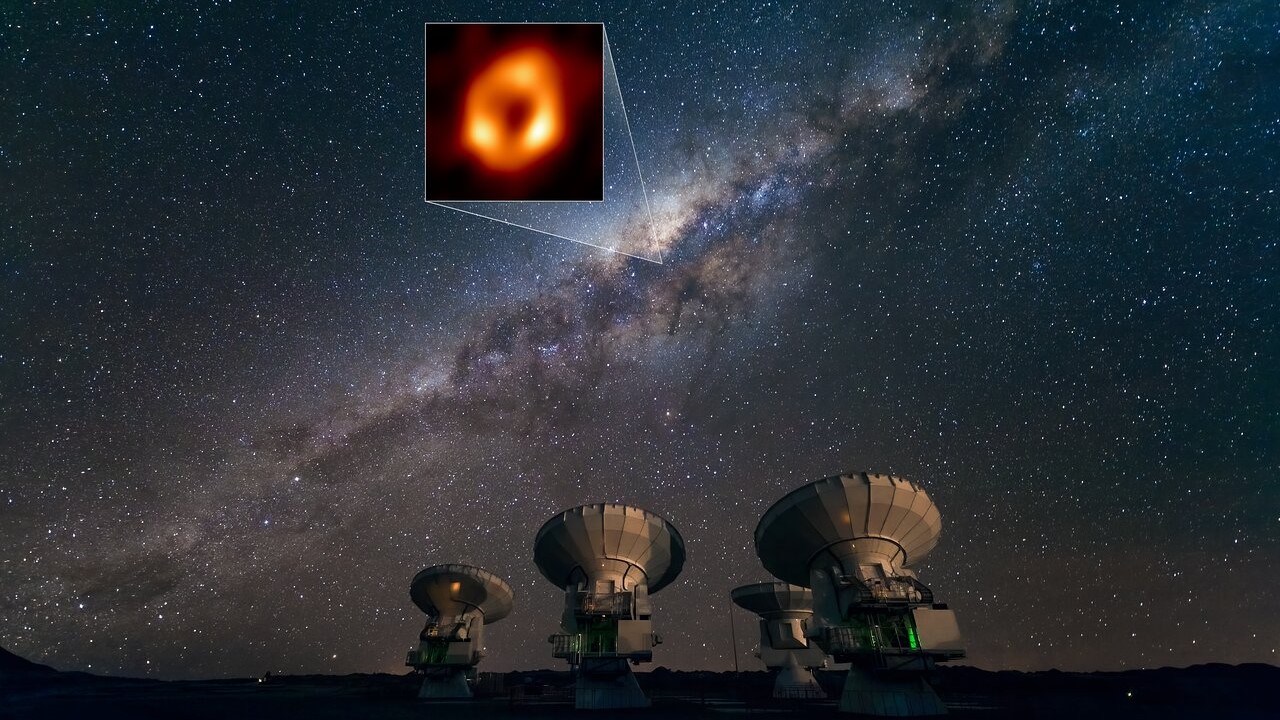This Thursday, astronomers from the Event Horizon Telescope Collaboration unveiled the first image of the supermassive black hole posted at the center of our own Galaxy, a monster four million times more massive than the Sun called Sagittarius A*. Such a technical feat involves many instruments and researchers scattered across the planet. But how exactly does it work?
According to the law of general relativity established in 1915 by Albert Einstein, the gravitational pull of a black hole is such that nothing can escape, not even light. A black hole being black by definition, it cannot be photographed directly. On the other hand, we can emphasize its presence by capturing the ionizing radiation emitted by the material gravitating around, before it is sucked up.
Just before the point of no return, the material indeed becomes very hot, then emitting light. It is therefore by focusing on this luminous path called the “event horizon” that we are able to observe the black hole posted in the center.
That being said, this cloud of matter swirling around a black hole is only visible using a very precise band of radio frequencies, called millimeter waves. To capture these waves, you need a radio telescope. This antenna must however be enormous to detect the weak radio signal emitted by such an object at such a great distance. As a reminder, the supermassive black hole of our Galaxy is about 27,000 light years towards the galactic center, nestled behind thick curtains of dust. However, no radio telescope offers the resolution necessary to obtain this data.
To operate, the international scientific community has therefore developed the Event horizon Telescope.
What is EHT and how does it work?
It is a network of eight major radio telescopes scattered around the world. Launched in 2015, the project involves approximately 80 astronomy institutes different, and therefore several hundred researchers.
The objective is to make these antennas work together using a technique called Very Long Baseline Interferometry (or VLBI) so as to form a single virtual telescope of approximately 10,000 kilometers in diameter (almost as wide as the Earth itself).
As the Earth spins, these different telescopes pick up slightly different waves of light emitted by heated matter around a black hole. These patterns are then combined to form a more complete picture.
Why is it important ?
The center of the Milky Way was first located about 104 years ago. Radio waves emanating from the galaxy’s core weren’t discovered until just over a decade later. It was then necessary to wait another half century for Sagittarius A* to be identified indirectly. This first photo is important, because it confirms that this object is indeed a supermassive black holeas we assumed, and not another radio source.
The announcements made today thus represent the culmination of decades of work, both technical and theoretical. From now on, these new data will allow researchers to better understand the nature and role of this enigmatic object.
We want to thank the author of this short article for this amazing web content
Black hole: how to obtain such an image?
Visit our social media profiles and also other pages related to themhttps://nimblespirit.com/related-pages/

